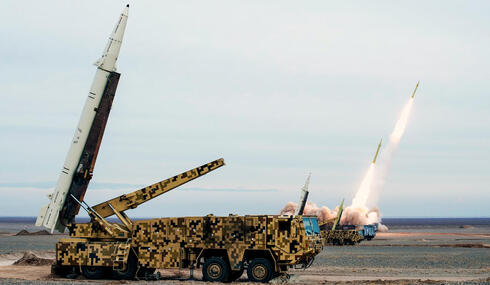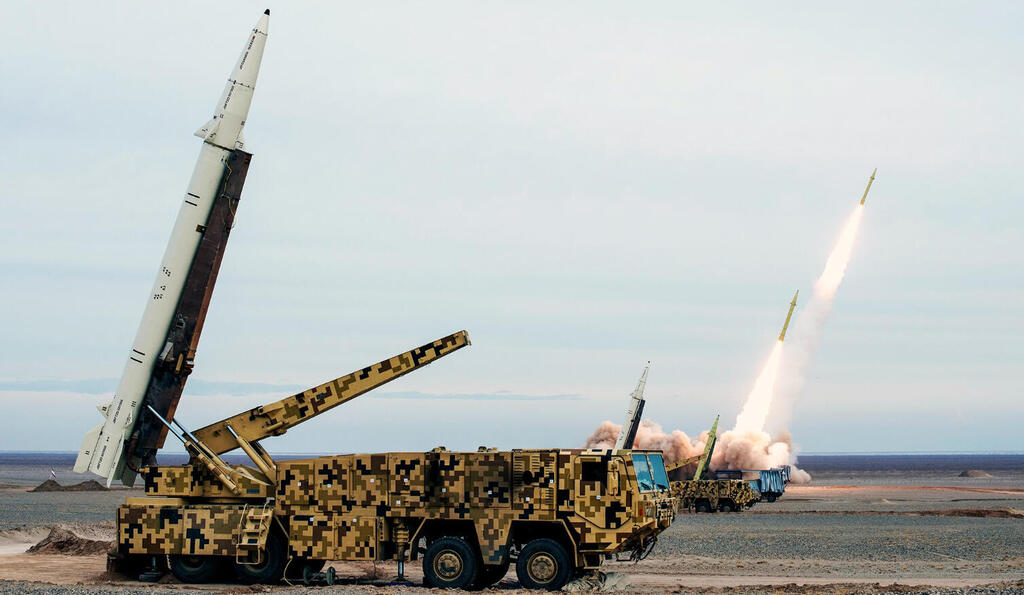
Is Israel facing a new hypersonic missile threat?
Houthis claim success; Israel scrambles to assess new security risks.
The unusual firing of a ballistic missile from Yemen towards Israel on Sunday morning raises a series of questions that the Air Force is investigating as part of a comprehensive inquiry.
The primary question is how a missile launched from over 2,000 kilometers away managed to reach the center of the country, where its debris was scattered over a large area in the Modi'in and Ben Shemen regions, and just a few kilometers from Ben Gurion Airport.
According to the Houthis, the missile they launched is hypersonic, traveling at speeds five or more times the speed of sound. Earlier this morning, a senior military official speculated that the missile might indeed be hypersonic, which would signify a fundamental shift in the region. If confirmed, this would indicate a significant intelligence failure on the part of the IDF and the security establishment.
Hypersonic missiles are characterized by their extreme speed, which makes them significantly more challenging for existing air defense systems to intercept. This threat first emerged during Russia's war in Ukraine. In response, Rafael announced last year a plan to develop a missile defense system called "SkySonic" to counter hypersonic threats. It remains uncertain when this system will be fully operational.
The ongoing war between Russia and Ukraine has strengthened Vladimir Putin's security ties with Iran. Iran has been supplying Russia with suicide drones for attacks in Ukraine and has recently begun providing ballistic missiles. The West fears that Russia’s alliance with Iran could involve knowledge transfer that advances Iran’s nuclear program and enhances its military capabilities. According to a security source, if the missile launched this morning is hypersonic, it should be investigated whether it is a product of the Iran-Russia alliance.
Despite the Houthis' claims, other sources in the IDF and the defense establishment believe the missile launched from Yemen is a standard ballistic missile, similar to those launched at Israel over the past year. A ballistic missile follows a fixed flight path, which Israel's air defense systems are designed to detect early. The relevant defense systems for this type of threat are Arrow 2 and Arrow 3, which are intended to intercept it at a great distance from Israeli territory. Over the past year, these systems have successfully intercepted numerous ballistic missiles launched into Israel by the Houthi rebels and Iran.
At the core of these systems is a detection and identification capability based on advanced radars. These capabilities should have provided adequate warning this morning, allowing for timely interception opportunities.
Israel is not alone in monitoring launches from Yemen. Coalition forces in the Red Sea, working closely with the US Central Command under General Michael Kurilla, are also involved in efforts to thwart attacks by the Houthis. One question the Air Force is investigating is why these forces did not receive a timely warning of the unusual launch.
The late notice of the missile’s arrival from Yemen significantly reduced one of the main advantages of the Air Force's multi-layered defense system, which relies on multiple interception opportunities. Upon early detection, an Arrow 3 interceptor is launched towards the missile, capable of intercepting it at high altitude while still in space. If this interception fails, another Arrow 3 or an Arrow 2 interceptor, also designed for long-range interception, can be deployed.
As far as is known, the attempt to intercept the missile from Yemen this morning using an Arrow missile failed. An Iron Dome interceptor, designed for short-range rockets, was also launched, but this attempt was not fully successful. The Air Force is investigating whether the missile was partially intercepted or if it disintegrated upon entering the atmosphere.
The scattering of missile fragments and interceptor debris resulted in several fires in the Kfar Daniel area. Shrapnel hit the Modi'in train station and caused damage. A conveyor belt used to transport limestone to the Neshar cement plant in Ramla also caught fire, and it is being investigated whether the fire was caused by interception fragments.
Since the beginning of the war, the IDF and air defense systems have conveyed to the public that no system offers complete protection against rockets and missiles, despite relatively high interception rates. A security source described the incident this morning as a "bad and unusual event that requires thorough investigation." The air defense system can take some comfort in the fact that alarm sirens were activated in many central cities minutes before the missile fragments detonated.
Regardless of the investigation’s outcome, the launch of the missile from Yemen is surprising, especially after the Houthis managed to insert a drone into central Tel Aviv last July, resulting in one civilian casualty and injuries. The drone explosion occurred without triggering an alarm, and the Air Force attributed the failure to "human error."
The Houthis in Yemen claimed responsibility for the missile launch but did not provide details about the intended target. It is noteworthy that the missile fragments landed just a few kilometers from one of Israel’s strategic sites, the Ben-Gurion Airport. However, in recent weeks, foreign airlines have gradually resumed flights to Israel after suspending operations last July due to threats from Hezbollah and Iran in response to the assassination of senior terrorist officials in Beirut and Tehran.














